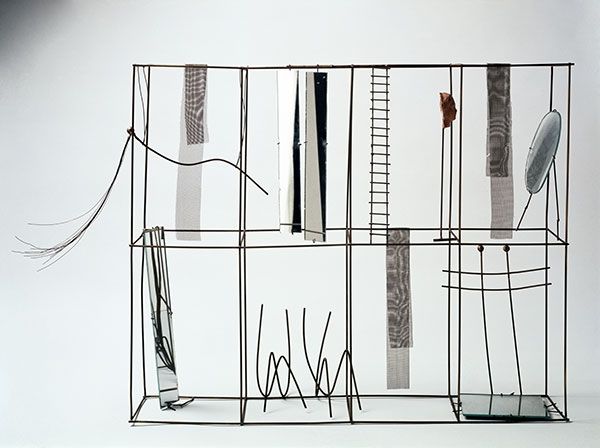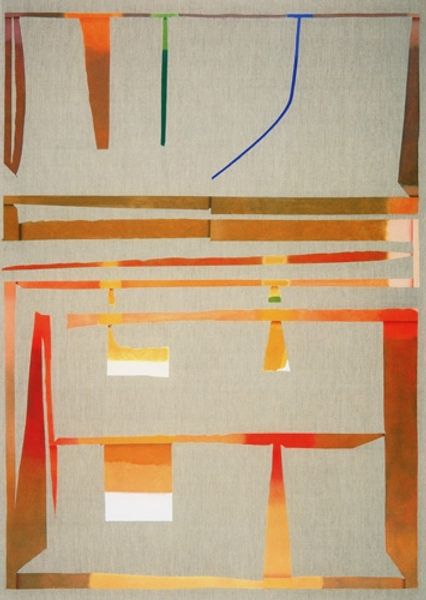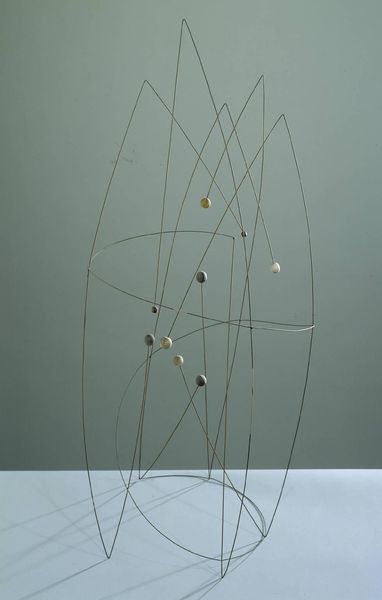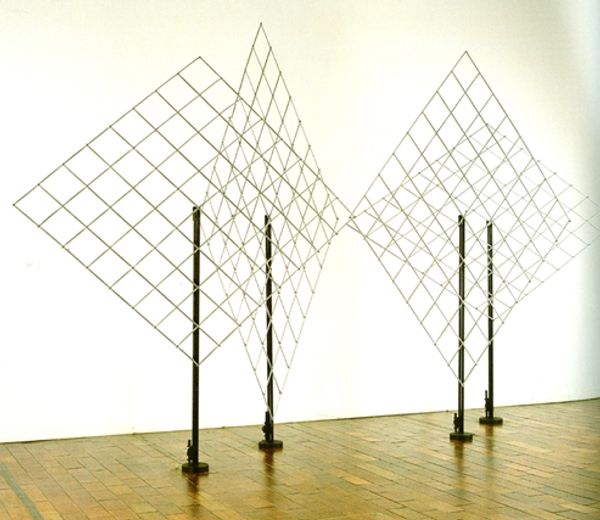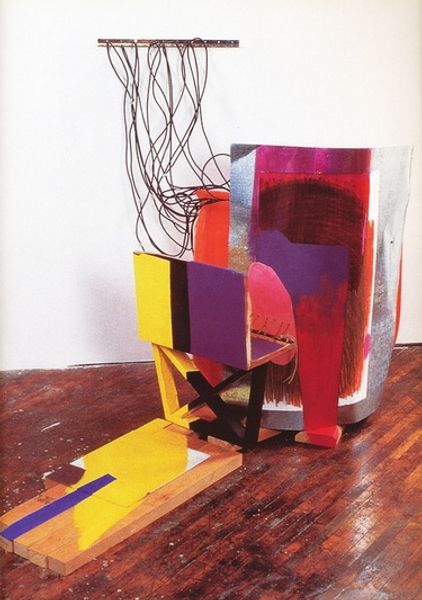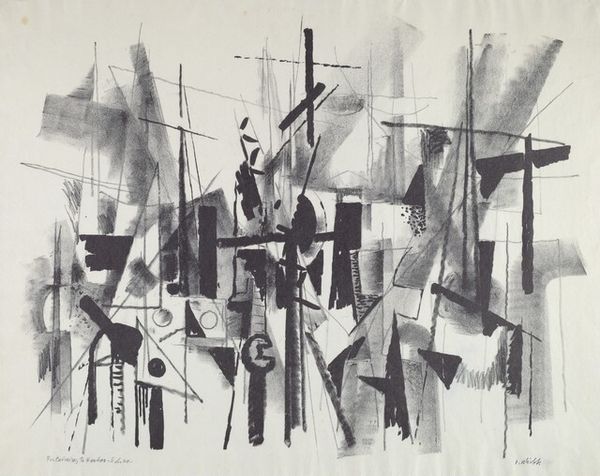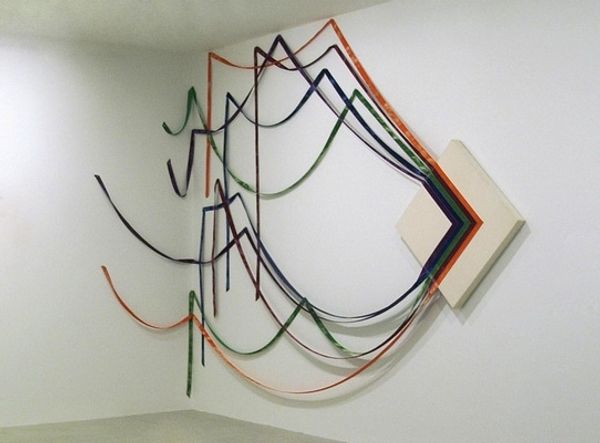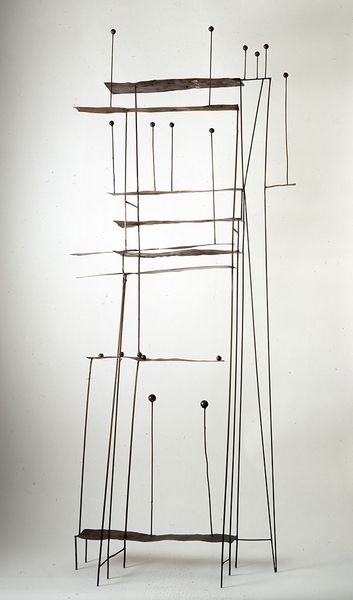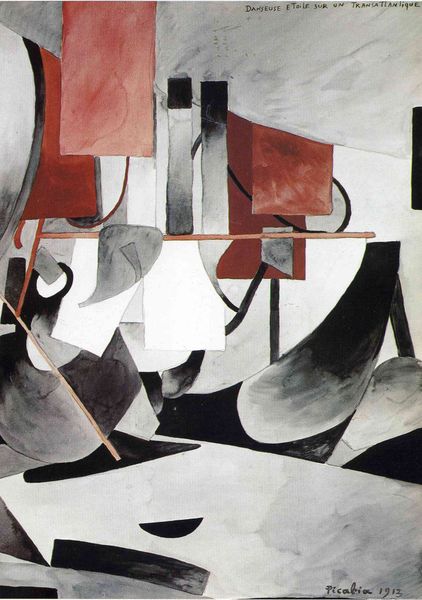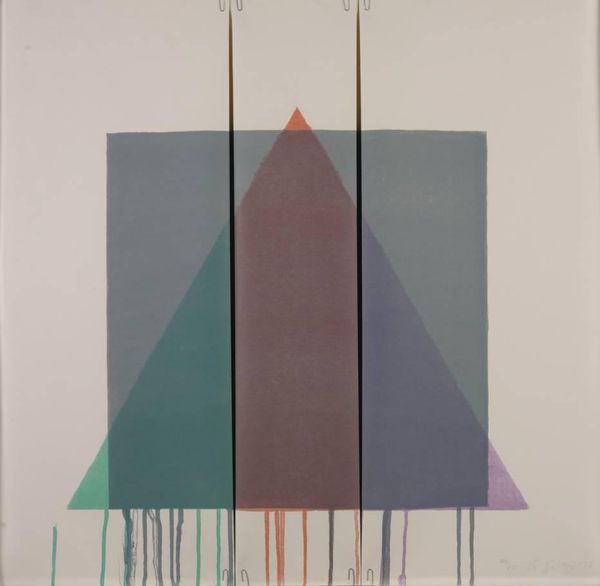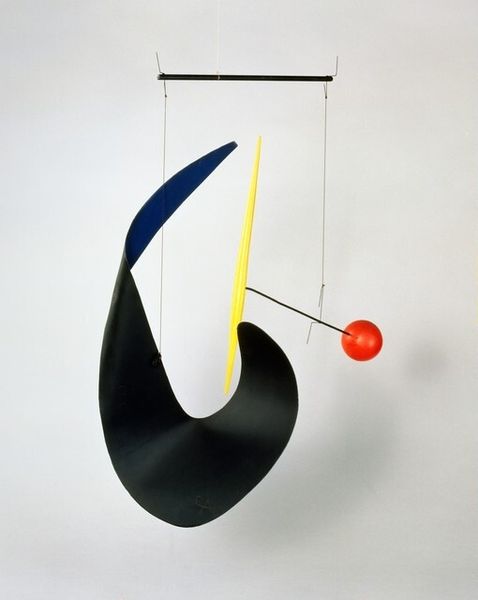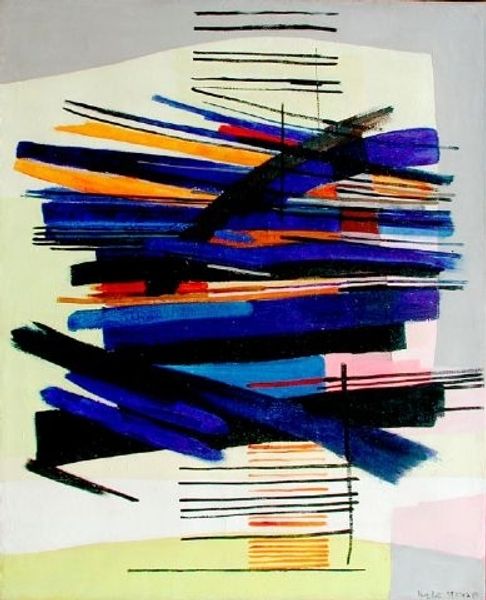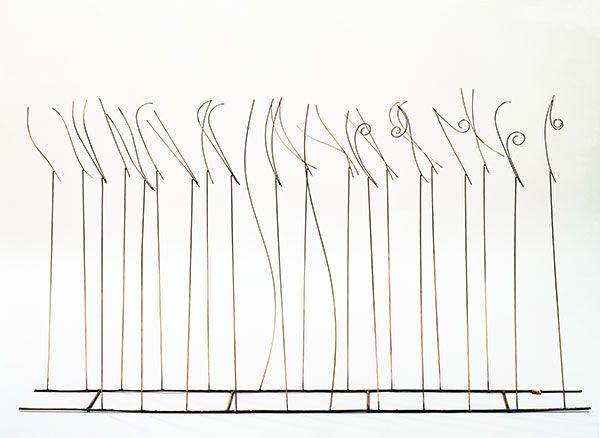
mixed-media, assemblage, metal, found-object, sculpture, site-specific, installation-art, wood
#
mixed-media
#
assemblage
#
metal
#
found-object
#
sculpture
#
site-specific
#
installation-art
#
wood
#
mixed media
Dimensions: overall: 283.2 x 431.8 x 158.8 cm (111 1/2 x 170 x 62 1/2 in.)
Copyright: National Gallery of Art: CC0 1.0
Curator: Jim Dine crafted this piece, "The Gate, Goodbye Vermont," in 1985. It's an assemblage, incorporating metal, wood, and various found objects. Editor: Immediately, it strikes me as both whimsical and slightly melancholic. The density of the tools hints at work, life, but also the cessation of labor—the 'goodbye' feels heavy. Curator: Interesting, heavy is one word for it. Gates, symbolically, represent transitions, boundaries. This one, choked with implements, doesn't seem to lead anywhere. I see the tools themselves acting as resonant signifiers of agrarian life, hinting at broader themes of time, memory, and perhaps the end of an era in rural America. Editor: Absolutely, and the medium itself underscores that theme. Consider the found objects – discarded, repurposed, and resurrected within the structure of the gate. The texture, the rust, the evident wear of each component whispers a story of labor, weather, and human hands. I want to know where he got those rusty tools, how they became evocative stand-ins for lives lived! Curator: I’m drawn to the recurring shapes. Notice the frequent inclusion of the heart, subtly painted or formed, among the more rigid, practical tools. It provides a layer of emotional complexity. How can something so visceral, so emotive, find a place amidst these hard-worn objects of labor? Is it a reminder of the labor of love or of loss? Editor: And what about the grid on the gate? The careful assembly belies a formal structure that's very deliberate. Are those grid openings cages? Is Dine hinting that agricultural or rural life is, or was, a form of enclosure? The materiality raises those questions for me. It’s not romantic or pretty, but deliberately rough. Curator: Perhaps it is deliberately withholding, protecting some unspoken narrative. Dine seems to be building an entire visual language through the placement of objects and what these objects are understood to signify within an agricultural framework. Even the colours, when he allows them, feel incredibly intentional. Editor: It truly is more than just a collection of objects. By recontextualizing these items within the art world, Dine forces us to reconsider the value we assign to labor, to materiality, and to the very definition of art. Curator: This sculpture creates such a tangible impression of culture held and leaving; the items signal an end, their assembly is mournful. Editor: For me, its strength lies in how it grounds abstraction with tangible references to real-world industry and human endeavor.
Comments
No comments
Be the first to comment and join the conversation on the ultimate creative platform.
